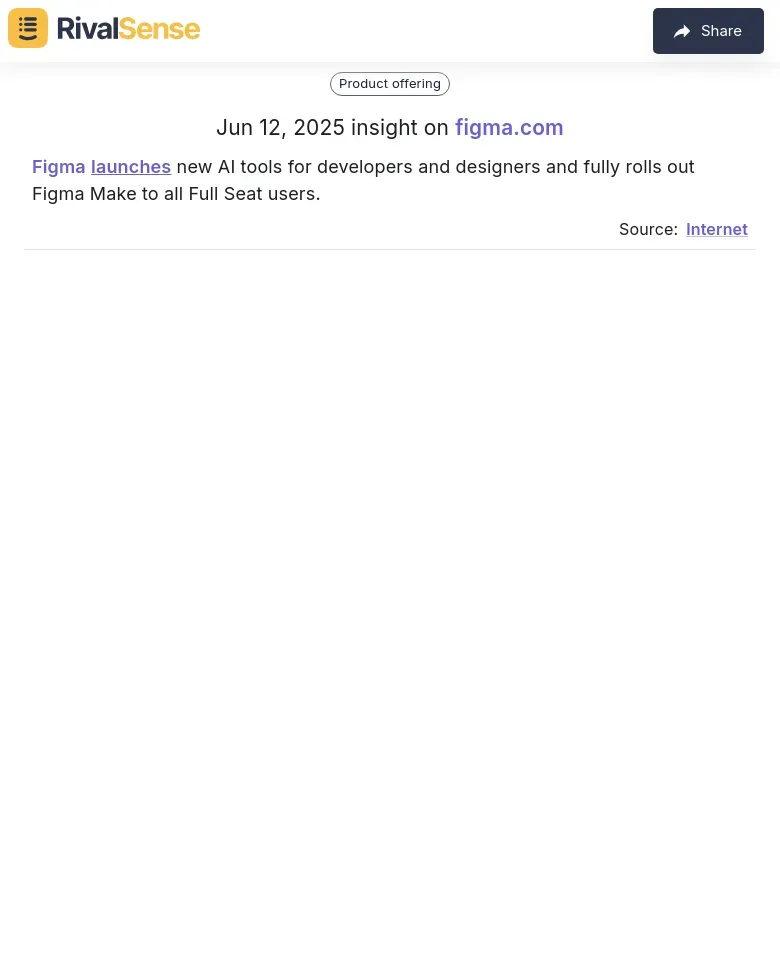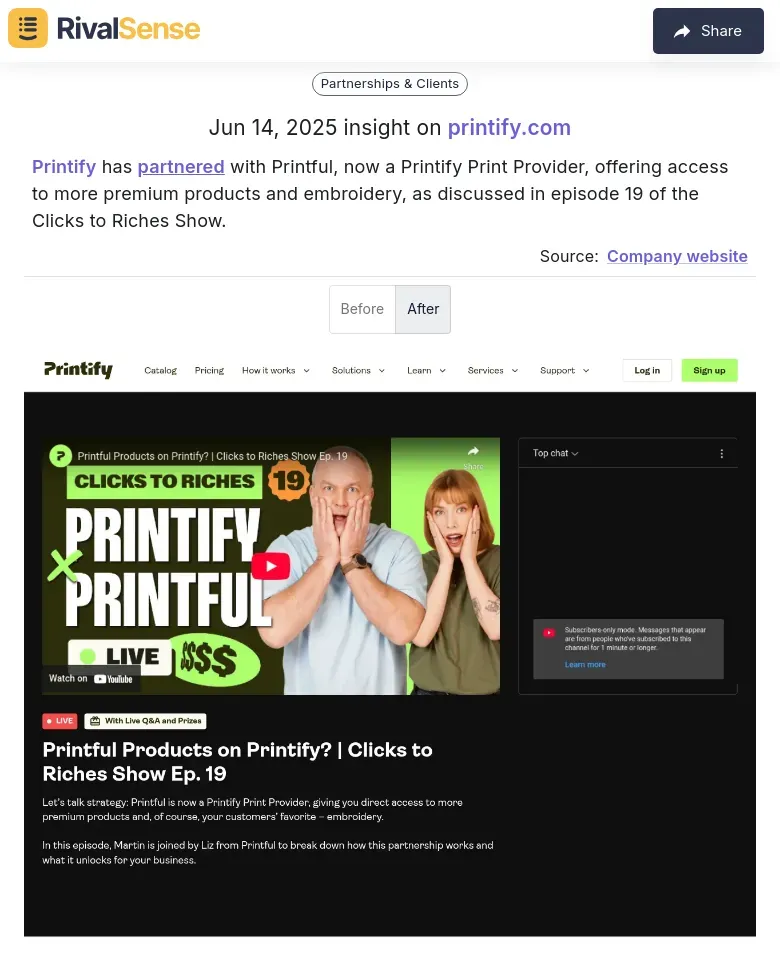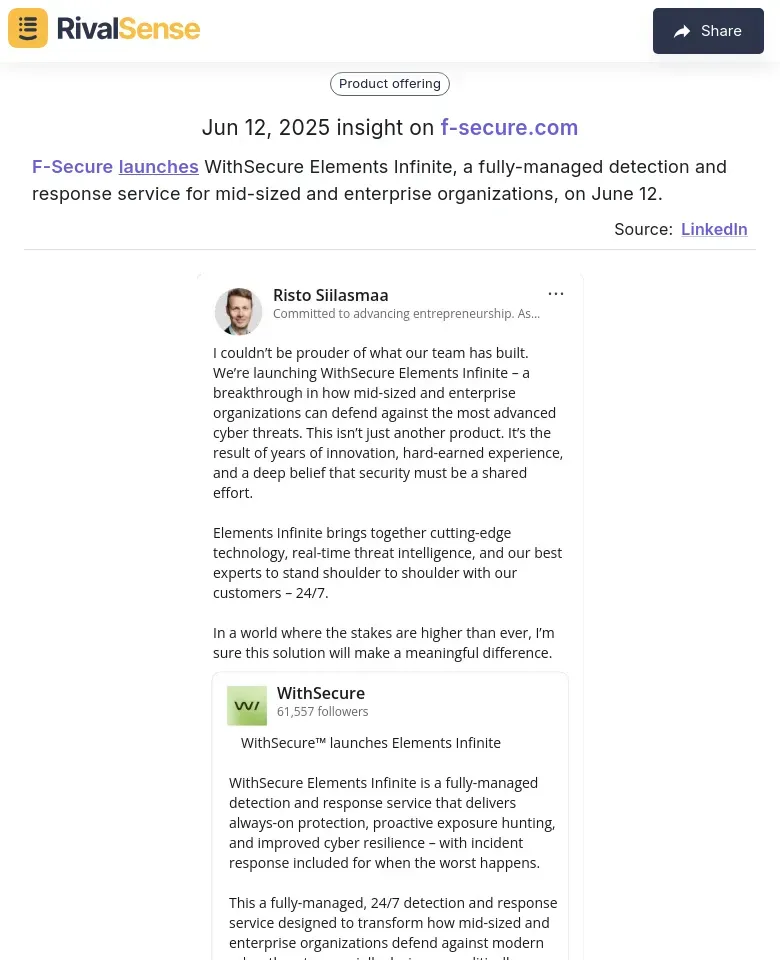Practical Competitive Intelligence: A Founder's Guide to Staying Ahead
In today's fast-paced business environment, staying ahead of your competitors isn't just about innovation—it's about being informed. Practical competitive intelligence (CI) is a game-changer for founders looking to make data-driven decisions. Here's how you can leverage CI to stay ahead, with actionable steps and tips to get you started.
Why Founders Need Practical CI 🧠
Competitive intelligence goes beyond market research—it’s about actionable insights that directly impact your strategy. For founders, understanding competitor moves in real-time helps avoid reactive decisions and uncovers gaps in your own offerings. Focus on tracking changes that affect your bottom line: product launches, pricing shifts, partnerships, and market positioning.
Key CI Areas to Monitor (With Real Examples)
Tracking specific competitor activities provides tangible advantages. Here are critical categories with practical examples:
-
Product Launches & Updates
New releases reveal innovation trends and feature gaps. For instance:

Figma's AI tools rollout signals where design software is heading. Spotting this early helps you prioritize R&D or differentiate your UX. -
Strategic Partnerships
Alliances expand market reach and capabilities. Notice how collaborations create opportunities:

Printify+Printful joining forces unlocked premium products for users. Monitoring partnerships helps you anticipate market consolidation or identify potential allies. -
Service Expansions
New offerings indicate target audience shifts. For example:

F-Secure's enterprise security service highlights demand in managed IT solutions. This intel could prompt you to adjust pricing or bundle services.
Actionable CI Framework for Founders 🚀
Implement this step-by-step approach:
| Step | Action | Outcome |
|---|---|---|
| 1️⃣ | Identify 3-5 key competitors | Clear monitoring targets |
| 2️⃣ | Track weekly changes (e.g., pricing pages, blogs, job postings) | Early trend detection |
| 3️⃣ | Analyze impact ("How does this affect our Q3 goals?") | Strategic adjustments |
| 4️⃣ | Share findings with product/sales teams | Aligned decision-making |
🔍 Pro Tip: Use Google Alerts for basic monitoring but supplement with specialized tools for comprehensive coverage—especially for regulatory filings or niche social mentions.
Turning Insights Into Action ✅
- Pricing shifts: If rivals lower costs, audit your value proposition
- Feature launches: Benchmark against your roadmap quarterly
- New hires: Assess if talent acquisitions indicate market pivots
Remember: CI isn't about copying—it's about anticipating. When Figma released AI tools, savvy founders evaluated whether to accelerate their own AI integration or niche down.
Streamline Your CI Process
Manually tracking competitors eats valuable time. Tools like RivalSense automate monitoring across:
- Company websites & registries
- Social media & news outlets
- Pricing/feature updates
They deliver digestible weekly reports with insights like those shown above—saving hours while surfacing actionable opportunities.
→ Try RivalSense Free to get your first competitor report today. Spot threats, uncover opportunities, and lead your market with confidence.
📚 Read more
👉 How Rayobyte's Proxy Growth Spurred Competitor Strategy Shifts
👉 How Clockify's New Features Reshape Time Tracking Competition
👉 Boost HVAC Productivity with Competitor Regulatory Strategy Insights
👉 Decoding Competitor SEO Strategies for Legal Firms
👉 How Smartling's Mindtouch Move Spurred Rival Localization Upgrades
